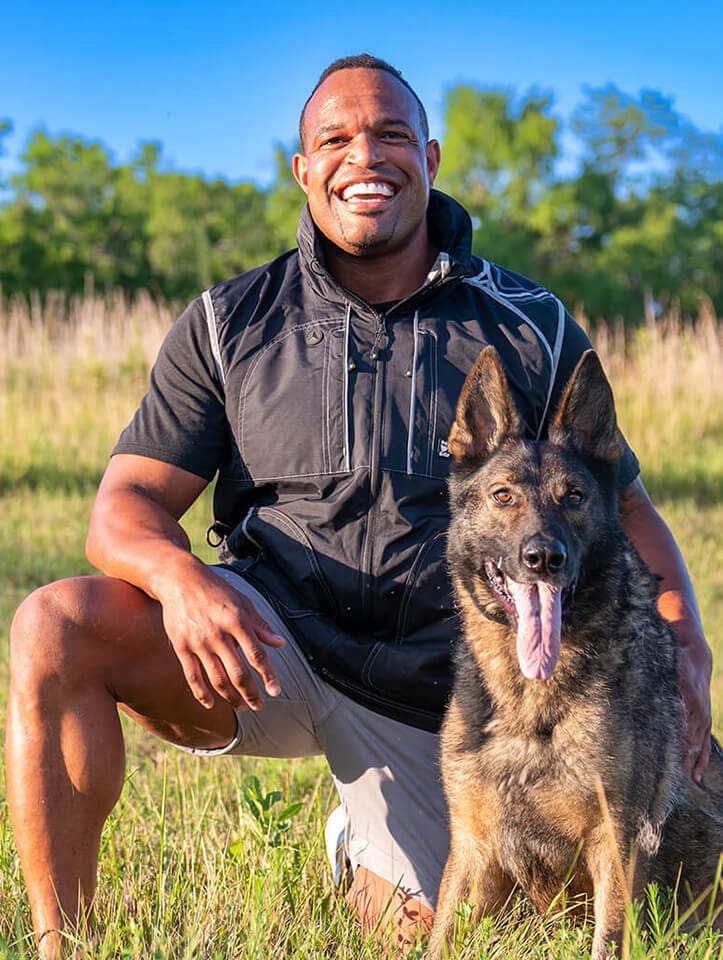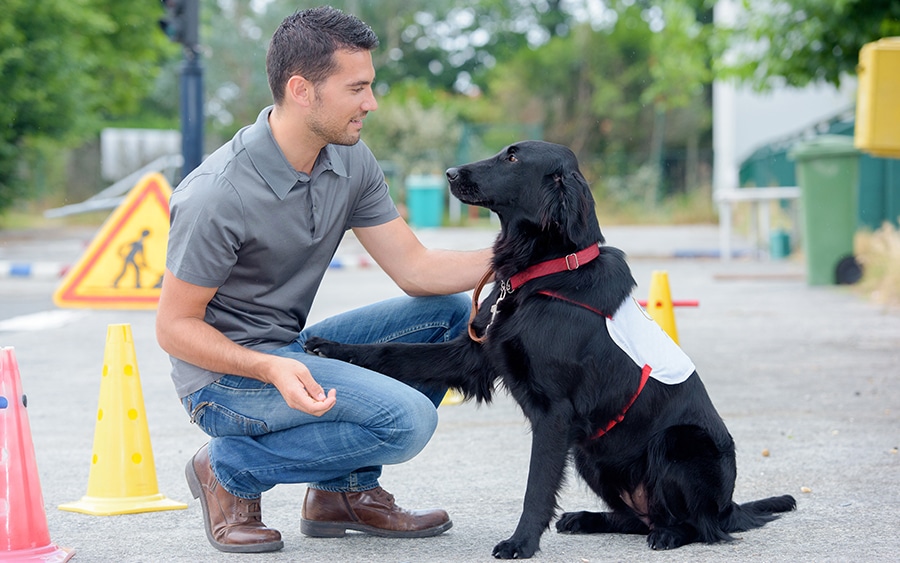Transform Your Canine's Habits With Proven Training Techniques
Changing your canine's behavior requires a nuanced understanding of their specific qualities and needs, as well as the application of proven training techniques. Consistency in your training approach not just improves obedience but additionally promotes a much deeper bond of depend on and respect in between you and your family pet.
Comprehending Dog Actions
Comprehending dog actions is necessary for effective training and communication in between people and their canine companions. Pets, as social animals, show a series of habits influenced by genetics, environment, and experiences - Dog training. Acknowledging these behaviors helps owners customize their training approaches to satisfy the certain needs of their canines
Secret elements of dog habits consist of body language, articulations, and social communications. For instance, a wagging tail often suggests exhilaration, while a reduced head might signal submission or anxiety. Understanding these signals can assist proprietors analyze their pet's psychological state and react properly. In addition, socialization plays a vital duty in shaping habits; pet dogs that interact positively with different individuals and various other pets are generally extra well-adjusted and adaptable.
Additionally, acknowledging anxiety signals-- such as pacing, evasion, or panting actions-- can avoid rise into much more severe concerns. Proprietors who are in harmony with their dog's behavior can produce a caring and risk-free atmosphere, promoting trust and boosting the training procedure. Ultimately, a deep understanding of canine actions lays the structure for a harmonious connection and efficient training outcomes, making sure both canines and their owners grow with each other.
Positive Support Strategies
Positive reinforcement strategies are commonly recognized as one of one of the most efficient methods for training pets, promoting a positive understanding atmosphere. This approach entails satisfying desired actions with treats, appreciation, or play, consequently encouraging the pet to repeat those behaviors. Unlike punitive approaches, positive support develops trust and reinforces the bond between the trainer and the pet dog.
Incentives ought to be offered instantly adhering to the preferred habits to assist the pet make the connection. Uniformity is also crucial; using the exact same commands and incentives aids the canine recognize what is expected.
It is necessary to note that favorable reinforcement is not concerning bribery; instead, it has to do with reinforcing etiquette. With time, as the dog learns to associate specific activities with favorable end results, the regularity of benefits can be slowly minimized, transitioning to spoken appreciation or recurring incentives. This approach not just motivates obedience but also promotes a satisfied and certain pet dog, making training a much more satisfying experience for both celebrations involved.
Dealing With Common Issues
Resolving typical problems during dog training is vital for guaranteeing a successful and unified partnership in between the canine and its owner. Several pet dog owners experience behavioral obstacles, such as extreme barking, jumping, and chain drawing. Comprehending the origin of these behaviors is crucial for effective training.
To mitigate this, provide adequate physical exercise, psychological stimulation, and opportunities for social interaction with both human beings and other dogs. Educating the canine to rest upon greeting can redirect this behavior favorably.
Leash pulling is an additional widespread concern, often arising from a canine's passion to discover. Using appropriate leash taking care of methods, integrated with training procedures that encourage loose-leash walking, can company website dramatically boost this habits.
Additionally, problems like source guarding or separation stress and anxiety need customized approaches. Gradual desensitization and counter-conditioning can be reliable in dealing with these difficulties. By acknowledging and proactively taking care of these usual issues, canine owners can promote a much more delightful training experience and strengthen the bond with their canine companions.
Consistency in Training

To accomplish consistency, it is vital that all participants of the house stick to the same training methods. For instance, using the same spoken signs and hand signals makes sure that the pet gets consistent messages. In addition, the timing of benefits and improvements must be constant; immediate support raises the possibility that like this the pet will certainly connect the actions with the outcome.
Normal practice sessions, combined with organized timetables for feeding, walking, and playtime, assistance dogs anticipate and comprehend their setting, making them more receptive to training. Eventually, consistency promotes a feeling of security and trust, empowering pet dogs to find out extra effectively.
Building a Strong Bond
Exactly how can promoting a strong bond in between a pet dog and its owner improve the training experience? When a canine feels safe and secure in its link with its owner, it is more most likely to exhibit favorable habits and be receptive to learning.
Moreover, a solid bond assists in much better interaction. Dogs are adept at reading human cues, and a trusting relationship enables clearer signals throughout training. Owners that invest time in structure this bond with play, socializing, and positive support produce an environment where find out this here pets feel determined and excited to find out.
Furthermore, a reputable connection can minimize anxiety and behavior issues, as pet dogs are much less likely to act out when they really feel understood and taken care of. Therefore, focusing on the development of a strong bond not just enhances the training experience however additionally contributes to a better and extra well-adjusted canine. Ultimately, the journey of training changes right into a collaborative collaboration, leading to lasting behavior renovations.
Conclusion

Owners that are attuned to their pet's actions can develop a caring and risk-free atmosphere, promoting count on and improving the training procedure. Ultimately, a deep understanding of canine habits lays the structure for an unified partnership and reliable training outcomes, ensuring both dogs and their owners flourish together.
Addressing common problems during dog training is essential for ensuring a harmonious and successful partnership in between the dog and its owner.Consistency is a cornerstone of efficient pet training, as it develops a clear framework for the pet to comprehend expectations and habits.In conclusion, changing a dog's actions through verified training methods calls for an understanding of canine behavior, the application of favorable reinforcement methods, and an emphasis on consistency.